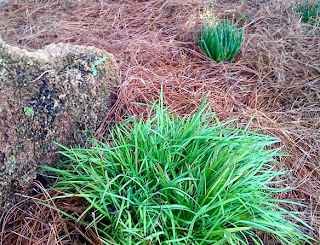

A vague murmur at the back of my mind warns that somewhere in the back pages of another Scriblets post is a story on the curious miscellany of Ben Schott. There are two volumes of Schott, each 158 pages and containing what journalist and author Stephen Fry called, ‘A fabulous collection of essential trivia.’ The first is Schott’s Original Miscellany (2002) and the second Schott’s Food & Drink Miscellany (2003). Amazon shows a new edition, Schott’s Quintessential Miscellany scheduled for release in August of this year. With so many pages of ‘little things’ to choose from, perhaps I can manage not to repeat anything from an earlier post.
In the first of the Schott volumes, on the very last page of the book a quote from Samuel Johnson admonishes: ‘There is nothing, Sir, too little for so little a creature as man. It is by studying little things that we attain the great art of having as little misery and as much happiness as possible.’
THE CURIOUS DEATH OF BURMESE KINGS:
Thienhko was killed in 931 AD by a farmer whose cucumbers he ate without permission. Thienhko’s Queen, fearing civil disorder, smuggled the farmer into the royal palace and dressed him in royal robes. He was proclaimed King Nyaung-U Sawrhan, and was known as the ‘Cucumber King.’ He later transformed his cucumber plantation into a spacious and pleasant royal garden.
In 1423 Razadarit died after becoming entangled in the rope with which he was lassoing elephants.
Nandabayin laughed himself to death in 1559 when informed by a visiting Italian merchant that Venice was a free state without a king.
SEVEN WONDERS OF THE ANCIENT WORLD:
(1) The Great Pyramid of Giza near the ancient city of Memphis, (2) The Hanging Gardens of Babylon, a part of Nebuchadnezzar’s palace on the banks of the Euphrates (3) The Statue of Zeus at Olympia, (4) The Temple of Artemis at Ephesus, (5) The Mausoleum at Halicarnassus, (6) The Colossus of Rhodes, and (7) The Lighthouse of Alexandria built by the Ptolemies on the island of Pharos.
SOME NOUNS OF ASSEMBLAGE:
a murmuration of starlings
a wilderness of monkeys
a bench of bishops
a murder of crows
a barren of mules
a business of ferrets
a drunkenship of cobblers
a clutch of eggs
SOME WORDS FROM OTHER LANGUAGES:
Malay—Quick! Go and fetch me the ornate bamboo caddy, or I will run amok in the compound wearing nothing but my gingham sarong.
Arabic—The admiral in the alcove, while sitting on his sequin sofa dreaming of harems, should fear the assassin rather than seeking solace in the alchemy of alcohol.
Sanskrit—The pundit and his guru were repeating their mantra, hoping for nirvana, when some fool ruined their karma, chipping the crimson lacquer on the chintz.
A PARADOX FROM OSCAR WILDE:
All women become like their mothers. That is their tragedy. No man does. That’s his.
FORMER US PRESIDENT GERALD FORD ON LUNCH:
The three-martini lunch is the epitome of American efficiency. Where else can you get an earful, a bellyful, and a snootful at the same time?
COLONEL SANDERS:
Kentucky Fried Chicken’s founder Colonel Harland Sanders (1890-1980) was a man of many jobs: farm worker, streetcar conductor, soldier, railroad fireman, lawyer, insurance salesman, steamboat ferryman, tire salesman, service station operator and cook. Sanders perfected his ‘secret blend’ of eleven herbs and spices at a service station in Corbin, Kentucky in the late 1930s, and in 1964 he sold his six-hundred strong KFC franchise for two million dollars. Sander’s title was not military (he was only ever a private), rather it was from the Honorable Order of Kentucky Colonels, bestowed on him in 1935 by the Governor, Ruby Laffoon.




























